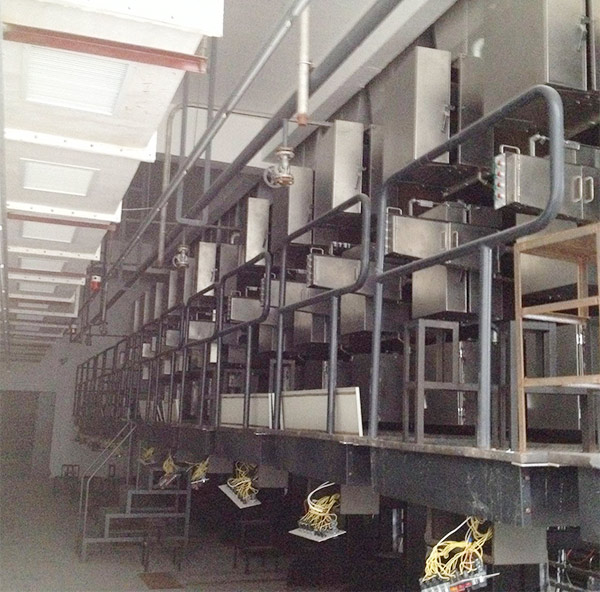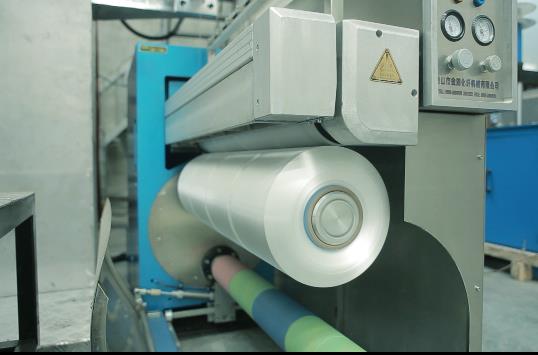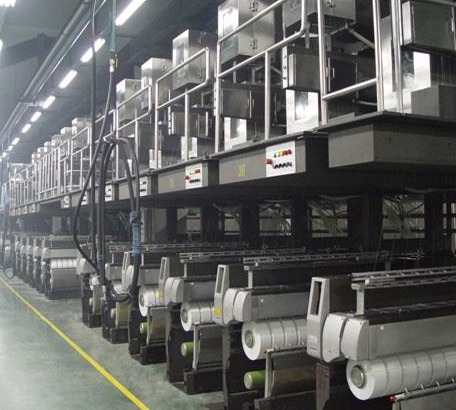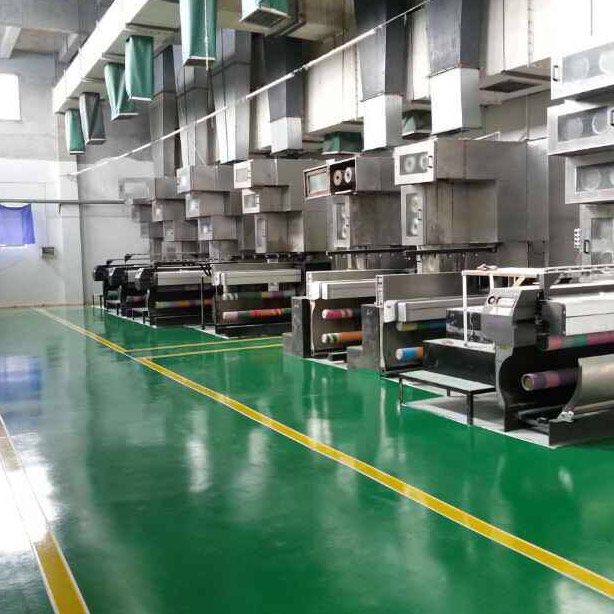- Polypropylene spinning machine
- Polypropylene FDY equipment
- Polyester POY spinning machine
- Polyamide FDY common and high strength equipment
- Polyester FDY equipment
- Polyester high strength equipment
- polyester、Polyamide、 Polypropylene BCF equipment
- Small spinning machine
- All kinds of spinning special parts
- 立冬至,问冬安|富邦化纤机械以匠心蓄能,愿你冬来皆安,岁岁无忧!
- The National Alliance of Model Workers and Skilled Craftsmen Innovation Studios in the Textile Industry was established
- Polypropylene FDY Spinning Machine: Technical Features and Application Fields
- On the Chongyang Festival, we respect the elderly and pass on warmth. Fubang Machinery wishes all our respected elders to bloom like ancient maple leaves and brave the frost like late chrysanthemums!
- The professional attire supply and demand matching conference builds a platform for industrial cooperation
- The polypropylene spinning machine is the core equipment driving industrial upgrading

- Contact:Mr. Huang Guofu
- Cel:0086-13901505556
- Fax:0086-519-83341119
- Email:czfb5556@126.com
- Add:No. 288-8 ChangLi Rd, Huangli Town, Changzhou, JS PRV.
According to the statistics of the General Administration of Customs, from January to April this year, the national textile and apparel export was 95.84 billion US dollars, an increase of 8.6% year-on-year (a year-on-year increase of 6.4% in RMB), 2.6 percentage points lower than the export growth rate in the first quarter. Among them, textile exports were 48.82 billion US dollars, an increase of 11.1% year-on-year; apparel exports were 47.02 billion US dollars, a year-on-year increase of 6.2%.
01The export of textile and clothing increased year-on-year
618 is coming soon, and people's shopping desire still exists for the logistics that have improved. And now Shanghai is speeding up the resumption of work and production. Many textile bosses who visited the market before said that they received some orders, which are much better than some time ago, although the profits may not be so high. After all, this also proves that demand is coming back, it is only a matter of time. Although some textile areas have been affected by the epidemic recently, fortunately, the response speed is fast. Even if there is an impact, I believe it will not take long to resume normal operations. In fact, many textile regions are not immune to this problem for most of this year, especially the pressure on foreign trade is heavier.
According to import and export data released by the General Administration of Customs, China's exports grew by 3.9% year-on-year in April, down sharply from 14.7% in the previous month. In labor-intensive fields, the growth rate of exports of textile products, furniture and clothing also dropped sharply.
Behind this is the actual situation of countless foreign trade enterprises. The order of industrial production in the Pearl River Delta and the Yangtze River Delta region has been disrupted successively due to the epidemic, and the pressure on logistics is not smooth and raw materials and costs are rising. Due to supply-side obstruction, overseas orders and customers have been lost. At the same time, the exports of labor-intensive products in Southeast Asian countries such as Vietnam in March and April rose sharply year-on-year.
02Profits are constantly being squeezed
Textiles have always been a thin-margin industry. In the first four months of this year, Shaoxing textile owner Qin Bo's orders fell by 20% to 30%. "The payment collection cycle is greatly affected," said Qin Bo. The fabrics he exports are all made by paying the customer's deposit, receiving the goods, and then paying the rest of the payment. Now, because of the longer transportation time, the payment collection cycle has also increased. .
In the past, it only took three or four days for fabrics made from Shaoxing to be shipped to Europe and the United States. From receiving orders, producing goods, shipping to customers, the whole cycle was about two months. Now, due to the obstruction of domestic and foreign transportation, the transportation time of raw materials such as yarn required for fabrics has increased; the shipping time has also been extended. Qin Bo estimates that the entire cycle has increased by two months in total.
A longer transaction process means more money is needed to operate. Qin Bo said that compared with the past, it is now necessary to spend 30% more capital turnover. And this part of the interest also increases the cost of the business.
In addition, the appreciation of the renminbi and the depreciation of the U.S. dollar last year also reduced the purchasing power of foreign customers and their willingness to place orders. The raw materials continued to rise, the cost of shipping rose, and power and production restrictions in various places increased production costs, which also continued to compress profits.
"The cost of shipping has increased by 10 times." Qin Bo said that in addition to the FOB (customer pays freight) model, the company also adopts the CIF (exporting enterprise bears the freight) model, which means that the company has to absorb the cost. The shortage of container supply also makes it necessary for enterprises to pay in advance to order containers. "In the past, it was 2,000 yuan for a container, and 10 containers a month could be done with only 20,000 US dollars. Now, it is necessary to pay 200,000 US dollars in advance to make a reservation. A large part of the expenditure."
The textile industry is an industry with thin profits, Qin Bo estimates, the profit margin is about 5%. "After working hard for a year, in the end, I found that I have no money to make, and I may even lose money." He said that sometimes it doesn't matter if the order is received or not, but customers still need maintenance.
Foreign trade is an important step in the development of the textile economy. Although there are still many difficulties, it also reflects the resilience of textile development. With the gradual improvement of the market and the help of some policies introduced, the market will eventually emerge from the haze. get out.
03How to grab the order
At the same time that China's export growth has slowed down, the export growth rate of Southeast Asia has increased significantly since the beginning of this year. Since March, the year-on-year growth rate of Indonesia's exports has exceeded 40%, that of Vietnam has exceeded 30%, and that of Malaysia, Thailand and the Philippines has been around 20%.
A number of business owners said that orders have recently been transferred to Southeast Asia, Mexico and other regions, but they are not overly concerned about the transfer of orders.
"Southeast Asian countries such as Vietnam can replace part of China, but due to the limited population base, they will not completely replace China's industrial chain." Liu Yongbin believes that Vietnam's own industrial foundation is weak, and its industrial support still needs to rely on China.
From the perspective of the textile industry, Qin Bo believes that there are still relatively few fabric orders transferred overseas. "The dyeing link in Southeast Asian countries has not developed vigorously, and the entire industrial chain is missing a key link." Qin Bo said that clothing orders that were relatively less affected by environmental protection factors were transferred to Southeast Asia in large numbers.
Bai Ming, deputy director of the International Market Research Institute of the Academy of Commerce of the Ministry of Commerce, said: "Since March and April, the Pearl River Delta and Yangtze River Delta regions have been greatly affected by the epidemic, and the two regions are also important foreign trade centers in China, which will have a serious impact on the industrial chain in the short term. However, the impact of the epidemic on the global industrial chain is not released regularly. The international industrial chain has been repeatedly hit, but each time the impact point is different. In the long run, the epidemic is only one of the factors affecting the industrial chain and supply chain. "
Bai Ming believes that the small size of Southeast Asian countries makes it difficult to generate sufficient economies of scale, but ASEAN integration can also accelerate industrial support. For labor-intensive foreign trade enterprises, they can transfer to the central and western and northeastern regions in the future, or implement the strategy of industrial going global, and extend to Southeast Asia, Mexico and other regions on the premise that the industrial chain is still controllable and autonomous.
In the face of slowing data, how to "stabilize foreign trade" has become the focus of attention of all parties. On May 5, Premier Li Keqiang presided over an executive meeting of the State Council to determine measures to promote the stability and improvement of foreign trade, help stabilize the economy and stabilize the industrial chain and supply chain, and proposed that "we must focus on securing orders and stabilizing the import and export of key industries and labor-intensive industries." ".
In response to the recent challenges of outflow of export orders faced by some foreign trade enterprises, the Ministry of Commerce also stated that it will do everything possible to help enterprises seize orders and develop markets. On the other hand, it actively supports small, medium and micro enterprises to participate in overseas exhibitions and connect with overseas buyers.
Gao Shiwang suggested that, in response to the problems of high sea freight and high raw material costs, the coordination of international shipping capacity should be strengthened, Chinese-funded enterprises should be guided to strengthen their operations in overseas ports, and state-owned shipping companies should strengthen their shipping support for brand-name companies going overseas. and transport capacity, while strengthening the stable supply of the supply side of bulk commodities.
04Textile machinery needs to be driven by innovation
"Actually, many enterprises in the textile machinery industry with 'unique skills' have also shown strong development potential, and embarked on the road of high-quality development along the special and new concepts. For example, Yuanxin Industry, Eagle You Textile Machinery, Niu Brand Textile Machinery, Guangshan White Shark, Qingdao Global, Yichang Textile Machinery, Beijing Zhongli, Tianmen Textile Machinery, Zhejiang Chaolong and many other outstanding enterprises in the textile machinery industry have become the Ministry of Industry and Information Technology. 'Enterprise." Gu Ping introduced.
Gu Ping said that the development direction of key projects such as textile machinery common technologies proposed in the "Guiding Opinions on the Development of the Textile Machinery Industry during the "14th Five-Year Plan" period is in line with the "specialization, specialization and innovation" actively promoted by the country. All are to guide enterprises in all links to give full play to their subjective initiative and actively innovate, solve the problem of "stuck neck", avoid the "barrel effect", create industrial chain advantages, and strengthen the competitiveness of the textile industry.
The "China Textile Machinery Industry Product R&D Center" that China Textile Machinery Association has been promoting is also actively guiding textile machinery enterprises to adopt a focus strategy and pursue product depth, from "one meter wide" to "one kilometer deep". At the same time, the construction of the three major platforms of technology, information and market that the Textile Machinery Association insists on will also provide good services for guiding the collaborative innovation of the industrial chain of enterprises in the industry.
In addition, Gu Ping specifically mentioned that from the perspective of the market, a group of "little giant" enterprises with high technology content, strong competitiveness and great growth potential will inject strong impetus into the "domestic cycle", and then use this as a Based on the foundation, expand the international market horizontally, enter the "dual cycle", polish the business card of "Made in China" in the global market, gain recognition from world-class customers, and become one of the world's brands.
Gu Ping emphasized that "specialized, refined and innovative" is not only policy support, but also a strategic development idea for enterprises. It is hoped that enterprises in the industry can increase investment in intelligent and automated scientific research, break the routine, and achieve path breakthroughs; make good use of the scientific research platforms established by the government and the industry, improve their own research and development capabilities, and hone themselves in the market; dare to try and make mistakes, and cultivate relevant talents , Improve the relevant system; focus on the main business, make equipment and enterprises with the spirit of craftsmen.
Disclaimer: This article is organized from the Internet, and the copyright belongs to the original author; if there is any infringement, please inform in time, and delete it after verification.
- 立冬至,问冬安|富邦化纤机械以匠心蓄能,愿你冬来皆安,岁岁无忧!
- The National Alliance of Model Workers and Skilled Craftsmen Innovation Studios in the Tex
- Polypropylene FDY Spinning Machine: Technical Features and Application Fields
- On the Chongyang Festival, we respect the elderly and pass on warmth. Fubang Machinery wis
- The professional attire supply and demand matching conference builds a platform for indust
- The polypropylene spinning machine is the core equipment driving industrial upgrading
- Management Skills: Unlock New Management Efficiency! Six core strategies to break through
- The 2025 International Advanced Fiber Materials Innovation Conference was held in Shengze
- Polypropylene spinning machine is a key link in the production of synthetic fibers
- When Xiang embroidery meets cheongsam, the two intangible cultural heritages join hands, a




